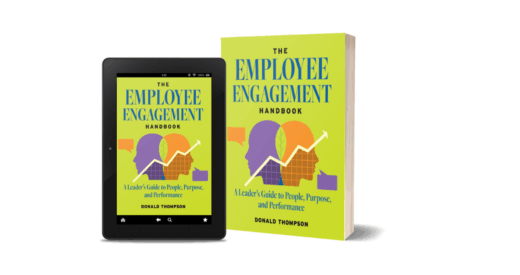As organizations recognize the link between diversity, equity, and inclusion (DEI) and better business outcomes, become aware of their biases, and appoint DEI leaders to create meaningful change, one would expect a significant increase in workforce diversity and feelings of inclusion.
Yet after reviewing more than forty years of employee demographics in the United States, sociologists at Harvard and Stanford found that not only are we more homogenous than in the 1970s, but we are also more divided. In a time when organizations are funneling so much time, energy, and talent to solve DEI issues, how can there really be so little progress in the workplace?
Being a diversity professional can be frustrating when change isn’t happening fast enough or at all. To help you avoid common pitfalls, let’s dive into the top five reasons why even expert DEI practitioners fail to make a difference at work.
1) Lack of training
DEI practitioners should be properly trained in how to create an organization-wide DEI strategy, track metrics, and oversee implementation. When hiring a DEI leader, too many corporate executives rely on a person’s individual passion as evidence they can do the job. Yes, a passion for DEI is important, but that passion must be accompanied by ample training and professional experience. Without appropriate training, it’s common for practitioners to select the wrong metrics, overlook underlying issues, or rush the process of organization-wide change, leading to feelings or resistance and defensiveness throughout the workforce.
To ensure you are steering your organization in the right direction, enroll in a course that will teach you best practices for leading organization-wide DEI. Our number one suggestion? The Diversity Leader’s Blueprint to Strategy and Implementation: an online, self-paced, 5-module course tailored for DEI practitioners that will lead you, step by step, through the business case for DEI, including how to gather data, gain organization-wide support, draft a strategy, and avoid mistakes in implementation.
2) Lack of C-suite support
Being a DEI practitioner without C-suite support feels like swimming against the tide. DEI efforts that are not championed by leadership will not have the impact nor reach that is necessary to kickstart and sustain organization-wide culture change. When a DEI practitioner faces corporate cultural resistance, a supportive executive can be a powerful voice. But, it isn’t enough for one senior leader to be bought-in and vocal. Every executive should know their organization’s current standing and future goals with respect to diversity and inclusion metrics.
C-suite leaders should be capable and willing to act as executive sponsors for employee groups so that members know they have a platform and a champion when decisions are being made. While the majority of unconscious bias training focuses on the individual, the institution itself is often upholding inadvertently biased practices and processes. The only way to effectively dismantle and rebuild these processes is through buy-in at every level of the organization.
3) Lack of accountability
Well-intentioned goals and strategies require accountability and follow through. At the highest levels of the organization, that can mean tying executive compensation packages, rewards, and recognition to DEI goals. Here is one powerful example to follow. Sodexo, one top-ranking organization for diversity, intentionally linked its diversity metrics to 10-15% and 25% bonuses for managers and executives, respectively. These diversity and inclusion bonuses are paid regardless of financial performance.
You can also increase accountability by setting public and measurable goals that encourage each stakeholder to do their part. For example, Johns Hopkins Hospital aimed to “increase the total number of under-represented minorities in the top 100 medical and administrative senior-level positions to 20 percent by the year 2020.” Along with diversity, make sure that your culture is inclusive and allows for your diverse employees to thrive.
4) Lack of budget
We recommend your DEI budget be 2-3% of an organization’s overall operating budget. According to recent data from McKinsey Consulting, globally, 2 out of every 5 companies have increased their DEI budgets in the last 6 months. In the same survey, when ranking business priorities during the pandemic, 1 in 3 executives ranked DEI as a top-5 business priority. Yet, according to Weber Shandwick’s “Chief Diversity Officers Today” report, 24% of Chief Diversity Officers report significant budgetary constraints, and 27% say that they have difficulty making the business case for DEI.
Although the COVID-19 pandemic and resurgence of racial justice movements across the world are forcing organizations to maintain DEI as a top priority, the data shows that few organizations are dedicating the appropriate budget to implement an effective, long-term strategy. One-off training will never be enough to enact change or impact business outcomes. A dedicated budget for DEI strategy shows your employees, job candidates, clients, consumers, and target market that DEI is a long-term, organization-wide business priority for your team.
5) Lack of mentorship or guidance
In most organizations, recruiters are hiring diversity professionals for the first time ever. Compared to other roles with mentorship programs already in place, diversity professionals who are piloting a new strategy don’t have the same level of guidance that other new hires might have. By partnering with external experts and building your network of DEI practitioners in places like Linkedin, you can begin to build a personal board of advisors who will help you make better professional decisions and learn from their success.
You can also create a sense of community by partnering with external experts, staying engaged in networks of DEI professionals, and exploring free resources online, like ebooks, microvideos, white papers, guides, and podcasts. The Diversity Movement regularly publishes blogs, webinars, and actionable content to put you on the path to success. Join our mailing list to stay updated on what is happening in DEI.
The role of a DEI practitioner in any organization can be difficult and emotional but also rewarding. Most DEI practitioners are under-funded and under-supported while being overworked. You have a lot on your plate. By avoiding these common risks, you will be aware of problems that could threaten your DEI efforts before they arise. Know that you have the support of your colleagues at The Diversity Movement behind you.






